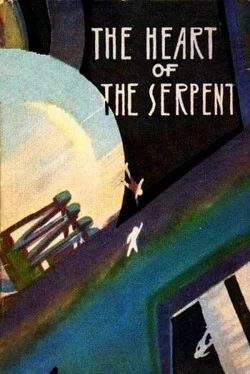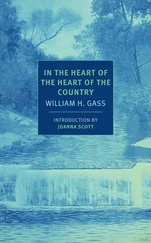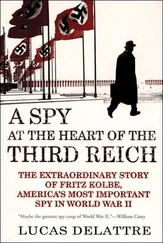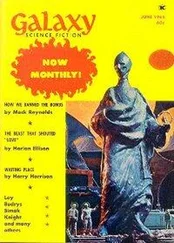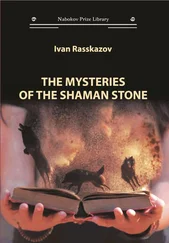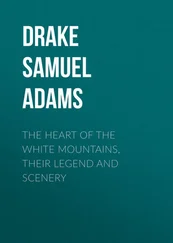“I wanted to take a look at the course the instruments have plotted. And it’s time to relieve you.”
He pressed a button in the centre of the panel and a polished concave cover slid open. A spiral of silver-coloured metal ribbon rose from the depths of the instrument. Through it ran a black needle indicating the course of the ship. Tiny lights gleaming like jewels on the spiral represented the stars of various spectral classes past which the Tellur’s course lay. On innumerable dials indicator needles danced as the computing machines worked out the direction of the next warp so as to keep the ship well away from the stars and dark clouds and luminous nebulae that might conceal unknown heavenly bodies.
Tey Eron was so engrossed in his task that he hardly noticed the passage of time. In the meantime the huge space ship continued hurtling through the black emptiness of the Cosmos. While the astrophysicist worked, his two comrades sat in silence in the soft depths of a semi-circular seat just inside the massive triple door that separated the control room from the rest of the ship.
Several hours later a gay tinkle of chimes announced that the computations were finished. The captain walked over to the control panel.
“Excellent! The next warp can be nearly three times as long as the first.”
“Not as much as that. Look at this…” Tey pointed to the tip of the black needle which was vibrating faintly in rhythm with a series of indicators.
“At any rate fifty-seven parsecs gives complete certainty. Knock off five to allow a margin of error. That leaves fifty-two. Stand by for the warp.”
Again the countless devices and relays were checked over. Moot Ang plugged in on the cabins where the remaining five crew members were fast asleep.
The automatic physiological observation devices reported all five in normal condition. This established, the captain switched on the protective field around the crew’s quarters. Red streaks running along the frosted paneling on the port wall showed the flow of gas through the tubes concealed behind.
“Ready?” Tey Eron asked the commander.
The captain nodded, and the three men in the navigation room settled into their deep padded seats. Secured firmly with air cushions, each took a metal hypodermic syringe ready for use from a compartment in the left arm rest.
“Well, here goes — for another hundred and fifty years of Earth-life,” said Kari Ram, driving the point of the needle into his arm.
Moot Ang looked at him sharply. But the faintly mocking gleam in the young man’s eyes reassured him. When his comrades had dropped back in their seats and lost consciousness, the captain switched on the robots controlling both the warp mechanism and the protective shield, and finally flipped over some levers on a small box next to his knee which brought the massive domes down noiselessly from the ceiling. When the domes were in place, he took one last glance at the dials now illuminated with a dim bluish light and plunged the hypodermic needle into his arm.
* * *
The ship came out of its fourth warp. It was cruising along at a speed less than that of light not quite four parsecs away from its destination — the dark giant KNT-8008 belonging to the rare class of dark carbon stars. The most powerful telescopes on Earth could hardly pick it out, but now it loomed as large as the Sun viewed from Mercury on the starboard, or “north,” screens of the ship.
Stars like this with diameters 150 to 170 times the diameter of the Sun were distinguished by the abundance of carbon in their atmospheres. At a temperature of 2,000-3,000 °C. the carbon atoms formed a specific type of molecules consisting of three atoms each. Stellar atmospheres with such a molecular structure absorbed radiation in the violet region of the spectrum and hence the luminosity of stars of this class was very low in relation to their size.
The cores of the carbon giants, however, had temperatures running to 100 million degrees, and this made them powerful neutron generators that transformed light elements into heavy ones, even heavier than uranium, all the way to californium and rossium. The latter was the heaviest of the known elements, with an atomic weight of 401, and had first been obtained a good four centuries earlier.
Scientists believed it was the carbon stars that were the Universe’s factories of heavy elements which they spread into space in periodical eruptions, and that they were the source of the new chemical elements that were constantly appearing in our Galaxy. The advent of the warp ship now enabled man to study carbon stars at close range, and observe the processes of transformation of matter going on there.
The crew of the Tellur had regained consciousness?m& were at work on the research programme for the sake of which they had cut themselves off from Earth for seven hundred terrestrial years. All were fully aware that they had a long job ahead of them. The processes the expedition was to investigate were complex indeed and physicists on Earth had not yet been able to find a clue to their secrets.
The ship seemed to be cruising very slowly now, but no greater speed was needed. Its course deviated somewhat to the south from a straight line to the carbon star so as to keep the locator screen shaded from its radiation; indeed the disc remained a black void for weeks and months and years in succession.
The Tellur, or IF-1 (Z-685), as it was listed in the register of the Earth’s Cosmic fleet (meaning the first inverted-field space ship, and the 685th ever to be built), was not as huge as the long-range subphotonic space ships which had preceded it. The older type of ship had carried crews of up to two hundred, and their voyages had lasted the lifetime of more than one generation, which enabled them to penetrate quite deep into interstellar space. Each time one of these long-range ships returned, however, it brought back with it several score men and women from the distant past. But while physiologically and intellectually on a high level of development, they found it so hard to adapt themselves to the times that many of them succumbed to melancholy and depression.
Now warp ships would carry people still farther out into the Cosmos, and in a very short time — as time is measured by astronauts — Methuselahs a thousand years old would be appearing in human society. Those who would undertake voyages to other island universes would be returning to their native planet millions of years later. This was the negative side of cosmic exploration — the great barrier Nature had laid in the path of the cosmic ambitions of her restless Earth-sons.
The latest space ships carried a crew of only eight. And whereas previously astronauts had been encouraged to raise families during flights, these travellers into boundless space and the future were strictly forbidden to do so.
Although the Tellur was smaller than its predecessors, its dimensions were nevertheless huge for so small a crew.
As always after a long sleep, the eight astronauts on board, most of them young people, were brimming with energy that sought an outlet, and they spent most of their free time in the gymnasium. They devised all sorts of difficult exercises and complicated dances, or performed the most fantastic acrobatics in the antigravitation corner of the hall. Another favourite pastime was swimming in the big pool filled with ionized luminescent water that retained the exquisite blue of that cradle of humanity, the Mediterranean.
Kari Ram was hurrying to the swimming pool when he heard a melodious voice behind him.
“I need your help, Kari. This turn just won’t come off right.”
The speaker was Taina Dan, a tall, slender girl in a short tunic of a shining green fabric that matched her eyes. She was the party’s chemist, the youngest and most high-spirited member of the expedition. Often enough she irritated the staid, level-headed Kari by her impulsiveness, but he shared her passion for dancing. Smiling, he turned and went toward her.
Читать дальше
